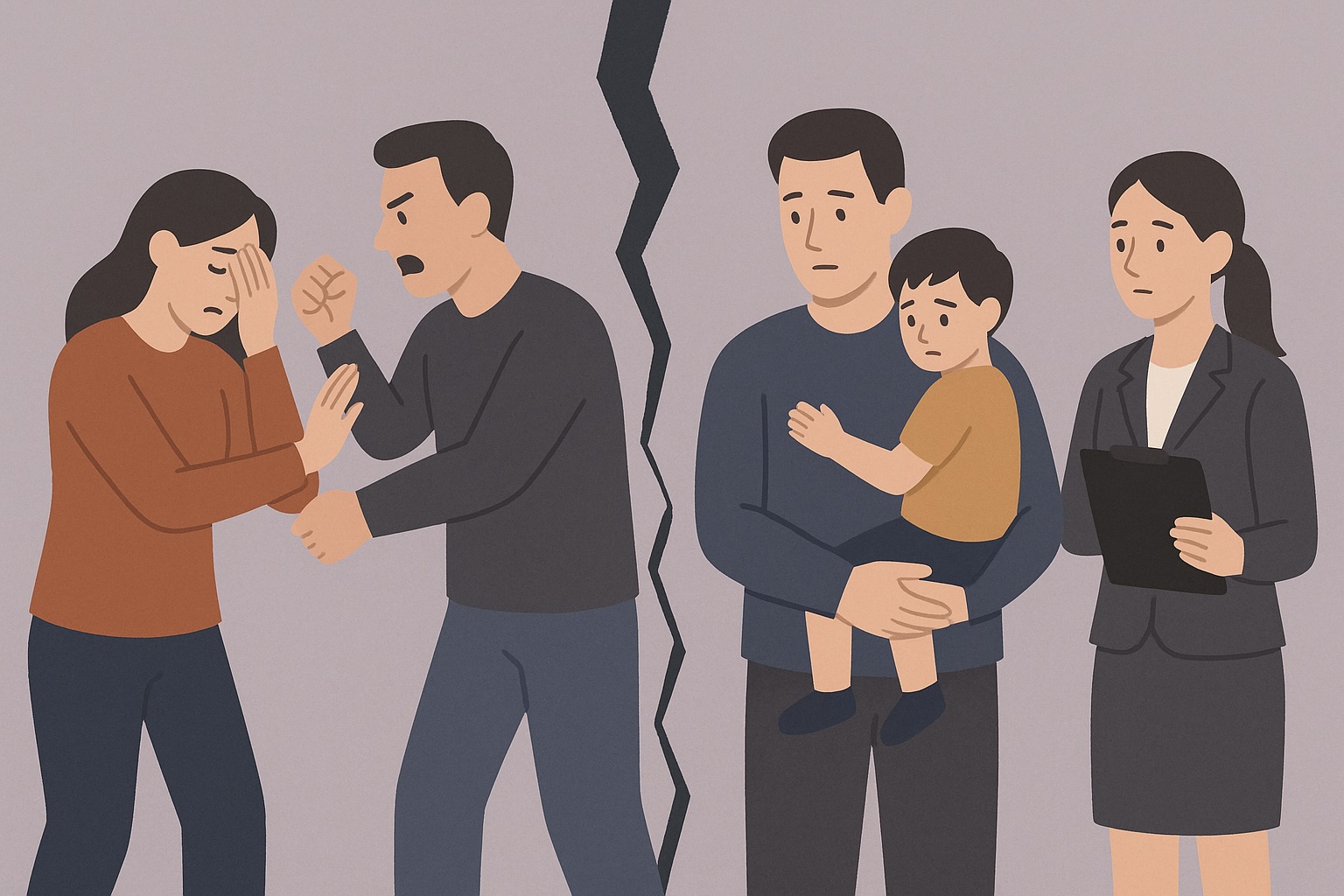How Domestic Violence Impacts Child Custody and Access Decisions in Ontario
In Ontario, family courts must consider the impact of domestic violence when making decisions about child custody and parenting time. Learn how abuse affects legal outcomes—and how to protect your child.

👩⚖️ How Domestic Violence Impacts Child Custody and Access Decisions in Ontario
If you’re a parent experiencing domestic violence, you may worry about your child’s safety during separation or court proceedings. The good news is that Ontario family law prioritizes the best interests of the child—and family violence is a key factor in that decision.
🧒 What the Law Says: Child’s Best Interests Come First
Under Ontario’s Children’s Law Reform Act, judges must consider:
- The child’s physical, emotional, and psychological safety
- Any history of family violence, including abuse of you, the child, or other family members
- Whether the abusive parent can meet the child’s needs
- The child’s own views and preferences, depending on age and maturity
Courts now use the term “decision-making responsibility” (formerly custody) and “parenting time” (formerly access).
🚨 How Domestic Violence Is Considered in Court
- Abuse doesn't have to be physical—emotional, financial, and coercive control also matter
- You don’t need a criminal conviction to raise safety concerns
- The court will review:
- Police reports or court orders
- Children’s Aid involvement
- Witness statements
- Your sworn affidavit (Form 35.1)
⚖️ Legal Outcomes in DV Cases
Depending on the severity and pattern of abuse, the court may:
- Award sole decision-making responsibility to the non-abusive parent
- Require supervised parenting time or no access at all
- Set strict conditions for contact (e.g., pickup via third party, no overnights)
- Delay or deny parenting time until safety measures are in place
🛡️ Protective Options for You and Your Child
- Restraining Order (Form 9C) – Prevents the abusive parent from contacting or approaching you or your child
- Exclusive Possession of the Home – Lets you stay in the family home while they must leave
- Supervised Access Centers – Safe spaces for monitored visits
- Voice of the Child Reports – Capture the child’s preferences through a neutral third party
🧾 Forms You May Need
- Form 8A – Application (General) for parenting orders
- Form 35.1 – Parenting affidavit (includes abuse history)
- Form 9C – Restraining order
- Form 14B – Motion for temporary or urgent parenting orders
- Form 14 – Fee waiver if you can’t afford to file
💡 Tips for Survivors Navigating Custody Issues
- Document all incidents of abuse and how they affect your child
- Speak to a DV-informed lawyer—many shelters and legal clinics offer referrals
- Ask the court for virtual hearings or separate rooms if needed
- Don’t assume that parenting time will be automatically equal—abuse changes everything
📌 Summary: Key Takeaways
- ✅ Ontario courts consider domestic violence as a major factor in parenting decisions
- ✅ You can ask for sole custody, supervised access, or no contact
- ✅ Protective orders and affidavits can support your case
- ✅ You don’t need a criminal case to raise safety concerns
- ✅ Legal aid and shelter-based support are available to help you
📍 Ontario Resources
- Legal Aid Ontario – 1-800-668-8258
- Luke’s Place – Family law help for women escaping abuse
- Assaulted Women’s Helpline – 1-866-863-0511
- Barbra Schlifer Clinic – Free legal and counselling services
- 211 Ontario – Connects you to local supports, shelters, and child services
